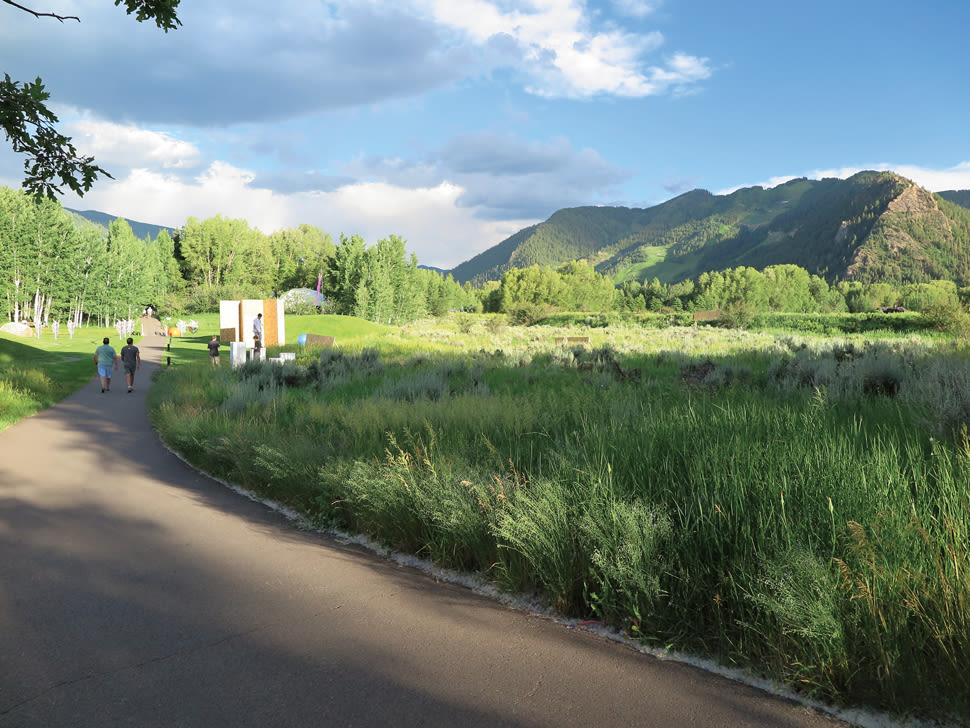6 Things Invented in Aspen

The campus of the Aspen Institute, founded here in 1949
Image: Lane Rasberry
Brunton Pocket Transit Compass
Date of birth: 1894
Origin story: Whether or not he got the idea from his extensive work in Aspen’s mines, engineer David W. Brunton revolutionized the industry with this enhanced compass, which combines the functions of multiple surveying tools into one handy, accurate pocket device. (Sound familiar, iPhone users?)
Impact: Still widely employed today by geologists, engineers, foresters, and archeologists, the Pocket Transit has had myriad historical uses, from wayfinding in World War I trenches to surveying Aspen’s first lift alignments.
Down Sportswear
Date of birth: 1948
Origin story: Lift rides were long and cold in 1940s Aspen, cutting short ski vacations and business for ski instructors. One of those instructors, Klaus Obermeyer, fashioned a warm ski coat out of his down comforter—and made his first sale to a client, the actor Gary Cooper.
Impact: Down became a staple in outdoor sportswear, and Obermeyer, at 98, still leads his eponymous snow sports clothing company.

Klaus Obermeyer in an early down jacket.
Aspen Institute
Date of birth: 1949
Origin story: Chicago industrialist Walter Paepcke attracted internationally renowned artists and thinkers—among 2,000 attendees—to a very sleepy Aspen for the Goethe Bicentennial. The 20-day convocation celebrated global humanism in the post-war era and subsequently inspired the creation of the Aspen Institute for Humanistic Studies.
Impact: Today the Aspen Institute has three US locations and 10 international partners working in 13 countries on values-based leadership and finding common ground to address regional and global challenges.
Workforce Affordable Housing
Date of birth: 1975
Origin story: As Aspen boomed in the early 1970s, affordable housing for workers shrank. County commissioners established the country’s first housing authority to require and incentivize reasonably priced employee homes. Soon, that office started to build such housing, too, creating a secondary market of deed-restricted units insulated from free-market forces.
Impact: North America’s largest program of its kind, the Aspen Pitkin County Housing Authority oversees more than 2,900 rental and ownership units and serves as an example of what—and sometimes what not—to do for other mountain resort communities.
Shaped Skis
Date of birth: 1992
Origin story: Champion windsurfer and Aspen ski instructor Ivan Petkov conceived the shaped ski while watching custom sailboards being carved. At a time when companies were cutting deep sidecuts on race skis, he wasn’t the only one experimenting with an hourglass shape. But Petkov received the patent on the geometry—and within two years sold 1,200 pairs of his S Skis.
Impact: Wider, shaped skis revived a market that had lost ground to snowboards by not only improving carving but allowing for innovations in freestyle and big-mountain skiing. Basically, they made the sport cool again.
River-Specific Stand-up Paddleboard
Date of birth: 2008
Origin story: Inspired by his background in surfing and whitewater kayaking, in 2004 local athlete Charlie MacArthur bought a foam-top longboard and paddle to play with on the Roaring Fork River. Hooked, he and pro surfer Dave Parmenter eventually designed the first river-specific SUP for C4 Waterman.
Impact: MacArthur added SUP instruction to his Aspen Kayak Academy and co-wrote a widely used curriculum for flatwater and whitewater SUP. As paddleboarding’s overall popularity soared (in 2013, it became the outdoor sporting activity with the most first-time participants), river SUPing has gained a firm hold—witness the Stillwater section of the Roaring Fork on any summer day.













































